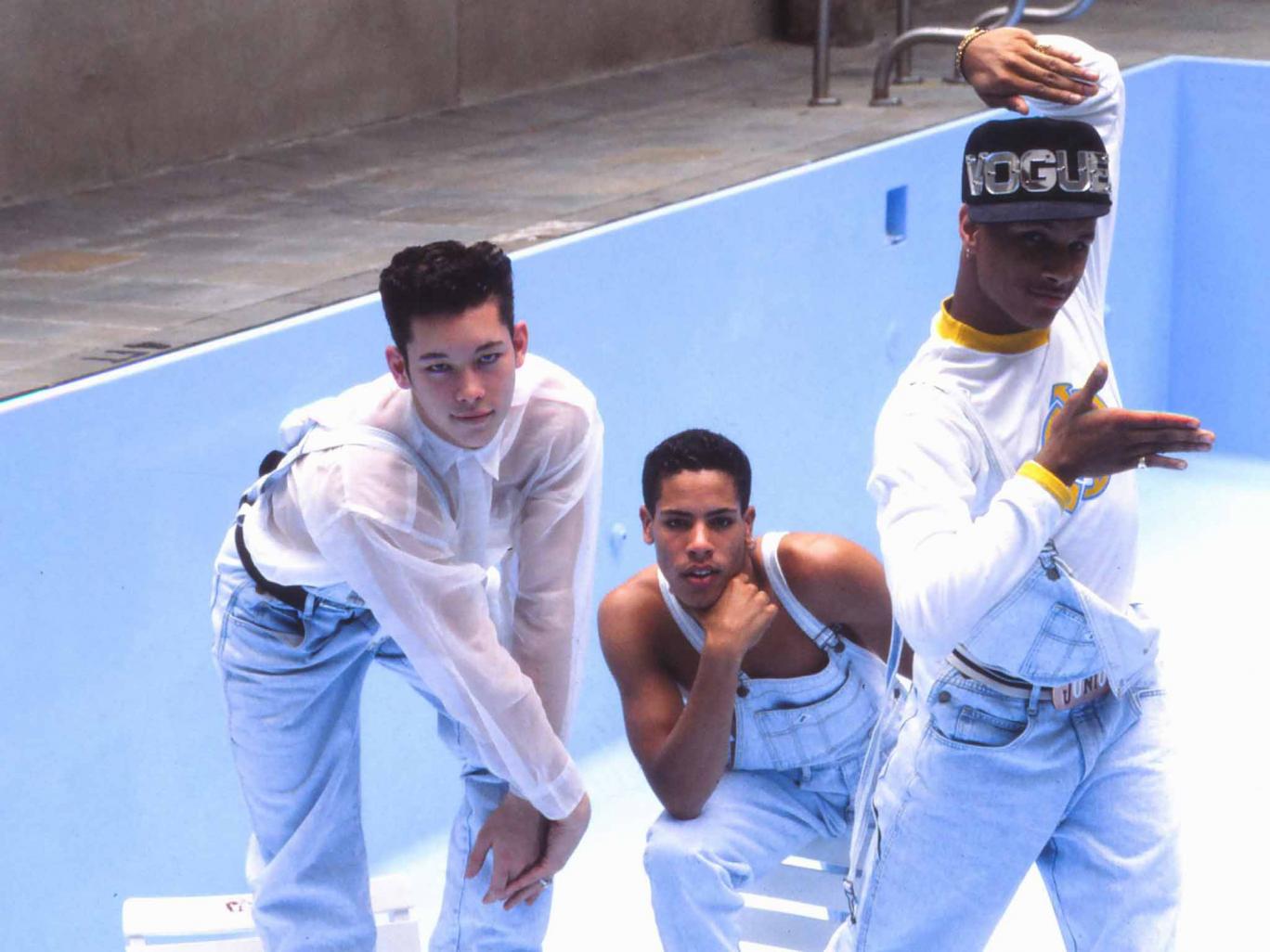There is something eternally fascinating about survival stories — not necessarily the ones that involve Robert Redford on a sinking boat or Sandra Bullock in a leaky spacecraft, but real survival stories, of people going on with their lives after the sometimes brief period that defined them. That fascination is multiplied, shaded with regret, nostalgia, and maybe even bitterness, when those defining moments involved youthful beauty, a physicality that time has eroded, or at least changed. Ester Gould and Reijer Zwann‘s crowd-pleasing, where-are-they-now-style documentary catches up with the troupe of dancers from Madonna‘s 1990 "Blond Ambition" tour, several of whom were subsequently featured in her then-controversial movie "Truth or Dare," as well as the iconic video for "Vogue." Of the seven — Slam, Kevin, Carlton, José, Luis, Gabriel, and Oliver (the straight cuckoo in this gay nest) — not all survived. Some contended with HIV/AIDS, some had to overcome addiction or homelessness, but all shared a unique and life-altering experience: a moment on the crest of a wave of fame that, with the arrogance of youth, they believed would last forever. Right until it crashed.
Actually, their time orbiting the biggest star in the world, just at the point at which she went supernova, was short, really only lasting from the beginning of the tour to the fallout following the 1991 release of "Truth or Dare." The film, with its spontaneous gay kiss between Gabriel and Slam, became the subject of a lawsuit when Oliver, Kevin, and Gabriel sued Madonna for, essentially, involuntarily outing them. It’s a bitter moment that in retrospect takes on an almost matricidal air (they frequently refer to Madonna in maternal terms), as though it were a premeditated plan to cut the apron strings. It wasn’t, of course, but it did abruptly sever their connection to the Queen of Pop. And it feels somewhat ruefully moot now, when all of them now acknowledge their intense pride in inspiring a generation of gay people just then coming to terms with their sexuality in an environment less enlightened than today’s.
Oliver, the self-confessed former homophobe despite his fondness for flamboyant clothing ("How can you be a homophobe? You look like a parrot" Luis remembers thinking) is now married, works in a restaurant, and the right hand side of his face sags slightly as a result of Bell’s Palsy, which he and his wife explain good-naturedly in one of the film’s most unexpectedly endearing moments. Jose lives with his boyfriend in a room of his adored mother’s apartment: he cries when she reminds him of the house she thought he’d one day buy her. Slam confesses to a secret he has held close since 1987, Carlton talks openly about his HIV-positive status, Luis refers to his heroin addiction: not one of them fails to understand just how young and naive they were when this whirlwind hit.
But neither would any of them exchange the memory of that period for anything, and most have remained connected to the dance world in one capacity or another. This contributes to the film’s loveliest sequence, where we cut between each of the men performing today: in contrast to the crisp bravado of the moves that made them famous, their short routines are elegiac and slow, scored to an delicate instrumental track rather than a pop hit, often performed in silhouette or near-darkness — a rather lovely metaphor for a graceful withdrawal from the limelight.
Otherwise, Gould and Zwann’s film runs along perhaps too familiar formal lines to have many tricks up its sleeve: it establishes a rhythm of switching between the dancers individually in their post-fame lives, that we just know must end with a reunion. Yet that does not rob the inevitable meeting of its simple, sweet power, and the gentle revelations, mellowed with time, that punctuate the excited chatter are truly moving. Yes, the contrived nature of the situation contributes to a performative feel, but these men are all performers, and their interactions are no less authentic and sincere for being self-consciously dramatic.
There is also the palpable air, hanging over that dinner table, that some or maybe all of them secretly hoped that Madonna herself would make an appearance. Because aside from their personal stories, "Strike A Pose" also functions as an examination of the halo effect of fame, and what happens when the flame moves on and leaves you behind. Despite Luis’ more philosophical take ("She doesn’t owe us anything… and we became who we are because of us, not her"), Madonna is the film’s structuring absence. As a result, some noticeable omissions (we never see the "Vogue" video, for example, and concert footage is used more sparingly that you might expect), while possibly rights-based, also feel thematically appropriate.
Indeed, a deus-ex-machina last-minute appearance by the star would have thrown the whole center of gravity of the film off, because it’s not about her, it’s about life after her. And that’s how "Strike a Pose," despite the melancholy nature of some of the stories, becomes such an uplifting survival tale. "At the time any one of us would have taken a bullet for any one of the others," declares Oliver definitively, but there’s not always a hail of gunfire handy in which to prove your mettle: mostly it’s how you persevere in the absence of drama that really tells you who you are. [B]
Browse through all our coverage of the 2016 Berlin International Film Festival by clicking here.

